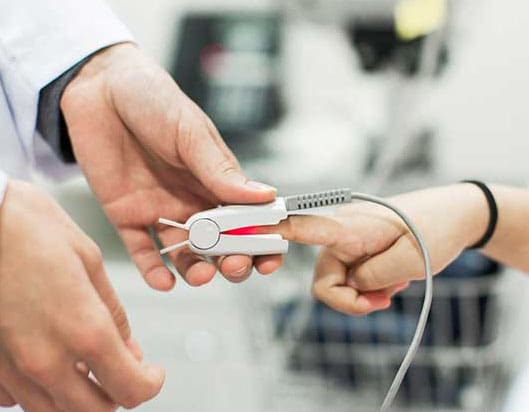How Does a Finger SpO2 Sensor Work?
Pulse Oximeters, otherwise known as an SpO2, monitors the hearts pulse rate. Note that in SpO2 it is a letter O not a zero. It’s a little confusing with all the different fonts available these days. One of the more popular SpO2 sensors are the finger worn clip. Nellcor is the most common manufacture of these clip devices.
These sensors use a spring loaded clip that fits snugly onto the patient finger. An infrared led and an infrared light detector are mounted in this clip. The led shines light into the finger and is received by the detector. However as the heart beats and blood surges though the finger this will reduce the amount of light reaching the detector. Each heart beat repeats this surge of blood and creates the rhythm of increased light and decreased light, hence the “pulse”
The finger clips are designed to be cleaned to hospital sanitary standards and reused. Typically these can cost about $250 new. Pre-owned devices cost considerably lest at about $45 for tested sensors.
The sensors are plugged into an electronic monitor device that provides power to the finger sensor and also monitors the detector for these increases and decreases in blood surges created by the heart. Nice easy to read displays are typically provided on the front panel. Nellcor 395 and Nellcor 600 are commonly used devices for these purposes. Refurbished and pre-owned units are available at MedProEquipment.com
Information on Blood Oxygen Levels
I hope you found this article helpful.

